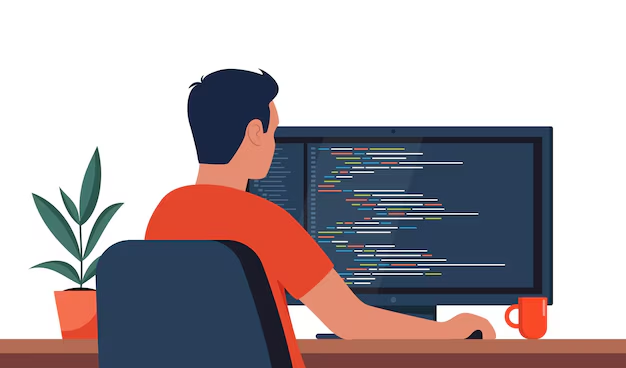Telephonic / F2F Interview Linux Administrator Questions
- Tell me about yourself and current project you are supporting ?
- How many servers you are handling/managing ?
- What type of applications are hosted on those servers ?
- What exactly you are managing on those servers ?
- Explain about Server Hardening steps ?
- How will you install any rpm packages ?
- Difference between Hardlink & Softlink ?
- What is the “lsof” command ?
- What is the Swap Space ? Your swap space utilisation is full and How would you investigate and troubleshoot ?
- How would you schedule the jobs ?
- What is the syntax for crontab ?
- Different run levels in Linux ?
- What are the tools you are working ?
- How do you check the disk utilization ?
- What is “chown” command ?
- What are the different owners for any file ? How did you find the permissions of any file ?
- What is autofs and NFS ?
- How you recover /etc/passwd file ?
- What is NIC bonding ? why we use ?
- How can you extend SWAP with LVM and without LVM ?
- Booting issues you faced ?
- Assign cronjob for every 1 hour ?
- Explain about patching ?
- User is unable to login ? Password policy is fine, how you troubleshoot ?
- root user is unable to create the file, what could be the cause ?
- How you update Kernel ?
- What is RAID ? Explain about types of RAID levels ?
- Difference between Soft link and Hard Link ?
- How you extend root partition ?
- Difference between yum and rpm ?
- Explain about GRUB ?
- How to find www port number ?
- Explain about booting process ?
- Explain about OSI layers ?
- Difference between TCP and UDP ?
- What is DNS ? Explain about DNS configuration ?
- What is DHCP procedure ?
- What are the types of virtualization ?
- How to add a server in Nagios ?
- What is High Availability and Fault tolerance ?
- What is NFS ?
- Apache Configuration file
- How you extend LVM ? Explain it
- What are DNS Fields ? Use of DNS ?
- How to find the redhat OS current version ?
- Explain about Kickstart ?
- Difference between FTP and SFTP ?
- What are the fields in /et/shadow file ?
- Brief introduction about yourself and current project supporting by you ?
- How many servers do you manage in current project ? What type of servers you manage ?
- How you login to the server ? which command you use for login ?
- Which type of tickets P1/P2/P3/P4 you manage ?
- How will you do OS Patching ?
- How do you take backup ? What method ? When will you do ?
- Different types of tools using in your project ?
- What types of issues you faced in your experience ? How you troubleshoot ?
- What is log rotation ?
- What is single, rescue and emergency mode ?
- How do you take snapshot of any server ?
- What is ITIL process ?
- How you build a server ?
- What is initrd and initramfs ?
- Ticketing tool using in your current project ?
- What is Cluster ?
- What is the difference between kill and kill -9 ?
- How to see the last 10 lines of a file? How to see the continuously updating log file ?
- How to find all files containing a specific string (e.g., “ENGINEER”) in a directory ?
- What are the three Standard File descriptors in Linux ?
- What is the purpose of “chroot” command in Linux ?
- How can you monitor the performance of a Linux System ?
- What is SELinux and how does it enhance security in Linux ?
- How do you troubleshoot a network issue in Linux ?
- What are systemd units and how do you manage them ?
- What is the purpose of cron and daemon ?
- How can you “find” files with specific permissions in Linux ?
- Differences between IPV4 and IPV6 ?
- How can you check the current disk usage of a filesystem in Linux ?
- Explain the importance/significance of “fstab” file in Linux ?
- What are Linux run levels, and how do they differ ?
- Describe the purpose and use of “iptables” command in Linux ?
- How can you check for memory leaks in a Linux Application ?
- What are the steps to take when performing a kernel update on a production server ?
- Explain how to setup a basic LAMP stack on a Linux Server ?
- How does the Linux kernel handle memory management ?
- Explain the concept of I/O scheduling in Linux ?
- What is Kernel panic ? How would you respond to it ?
- How you would troubleshoot high memory usage on a Linux server ?
- How do you manage and automate software updates in Linux Environment ?
- How do you configure a firewall on a Linux system using “iptables” ?
- What are “cgroups” in Linux and how they are used ?
- How can you recover a lost root password on a Linux server ?
- How do you configure a static IP address on a Linux system ?
- How can you schedule a specific task to run at a specific time in Linux ?
- How can you secure SSH access to a Linux Server ?
- What is the difference between “apt-get” and “apt-cache” ?
- What is Docker Containerization and how does it differ from traditional virtualization ?
- How do you implement disk quotas in Linux ?
- Explain Linux process priorities and how to modify them ?
- How do you configure OpenLDAP for centralized authentication ?
- How do you implement Linux Traffic control for bandwidth management ?
- Explain Linux capabilities and their role in security ?
- How do you configure and manage Linux Audit system (auditd) ?
- Explain network bonding in Linux and its different modes ?
- What is multipath I/O and how do you configure it in Linux ?
- What is kdump and how do you configure it ?
- Explain Linux Kernel tuning using sysctl parameters ?
- What is Linux DMZ implementation and how do you secure it ?
- How do you implement Linux Kernel module signing for secure boot ?
- How do you implement CPU pining in virtualization environments ?
- Explain Linux Time synchronization using chrony and PTP ?
- How do you implement Linux Power Management with TLP ?
- What is disaggregated memory management in Linux ?
- The server is running out of disk space. How do you identify the culprit files and clean up the disk ?
- What is Package management: yum, dnf, apt – differences and usage ?
- How do We Monitor System Performance and resource usage ?
- How do you write a shell script to find and list files greater than 100 MB in size?
- How can you manage users, groups, and permissions in Linux ?
- How do you schedule tasks using cron ?
- What is SSL and why it’s important for secure communication ?
- Tell me Port numbers in Linux (HTTP, HTTPS, SSH, FTP, DNS) ?
- Explain the Linux filesystem hierarchy and its key directories ?
- If a partition is corrupted. How do we recover it ?
- How do you check which process is using a particular file system ?
- Difference between /dev/sda and /dev/sdb2 ?
- A user cannot write to a directory despite having write permission, what could be the issue ?
- You added a new disk, how do you partition and format it for use?
- If you accidentally deleted a large file that was open by a process. How do you free the space ?
- How do you mount a new disk automatically at boot time ?
- A file system is full but ” du ” shows less usage. What could be the reason ?
- How do you find a file named “app_var.log” and delete it ?
- What is /etc/passwd and /etc/shadow ?
- How do you check the disk space usage of a specific directory ?
- How to check running processes and system resource usage ?
- Explain the Linux boot process from pressing the power button ?
- A server is running out of disk space. What steps do you take ?
- How do you add a new user and provide sudo privileges ?
- How to check the listening ports and the associated processes ?
- How to check for deleted files still held by processes ?
- What is the difference between “umask 022” and “umask 077” ?
- How do we identify all world-writable files on a system ?
- A user can’t read a file even though permissions look fine. What else would you check ?
- We need to allow one user from a different group to write to a shared file. How can you do that ?
- How would you restore default SELinux contexts for files after a permission change ?
- You want to remove execute permission for all users except the owner — what command will you use ?
- If one apache server is running, I need to check logs? where do I check? In which directory ?
- How do you archive and compress directory in Linux ?
- How to configure internet gateway to route table ?
- You want to create a persistent mount for NFS — what steps would you take?
- What is a zombie process and how do you kill it ?
- What is the purpose of sudo ? How is it configured ?

